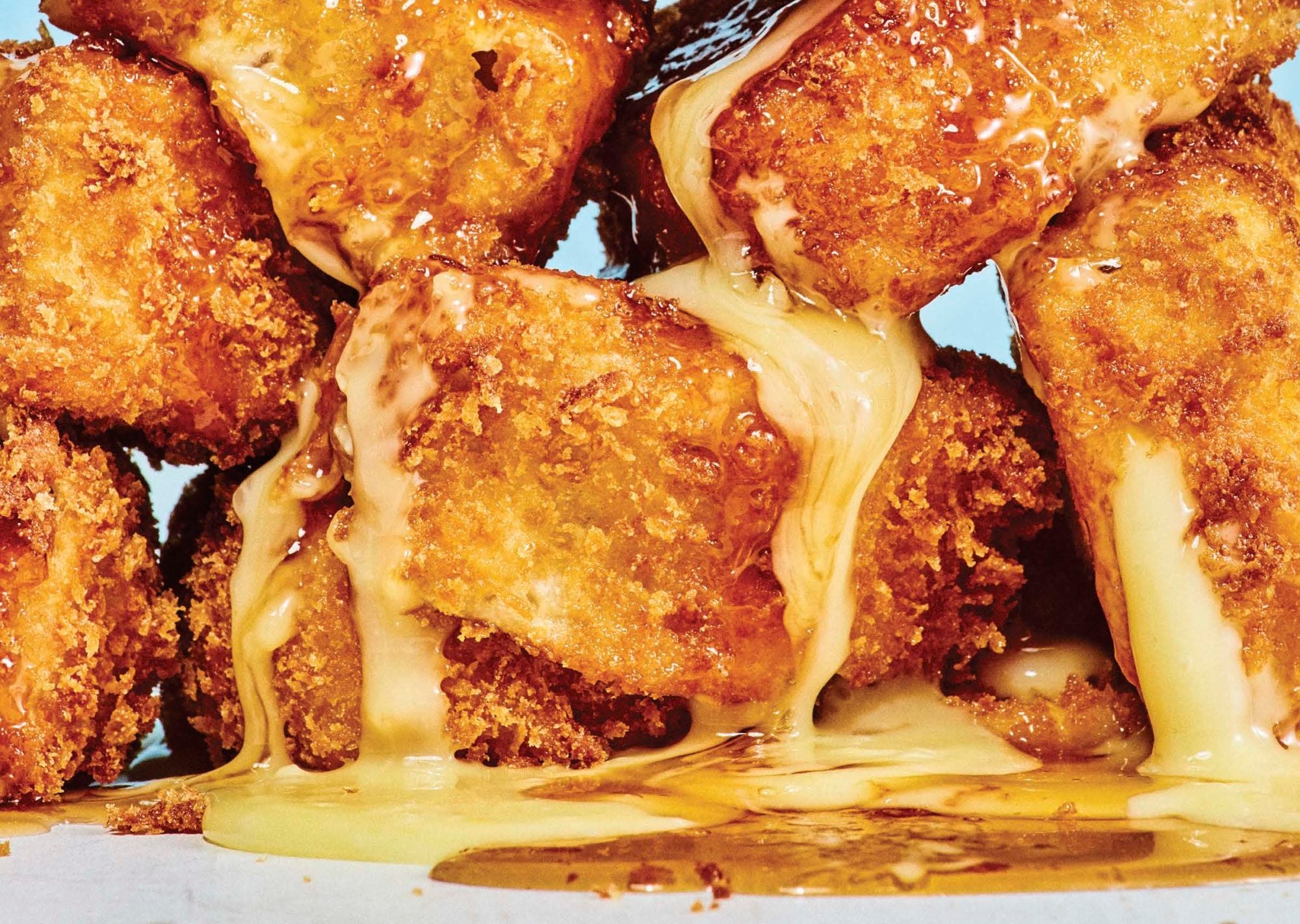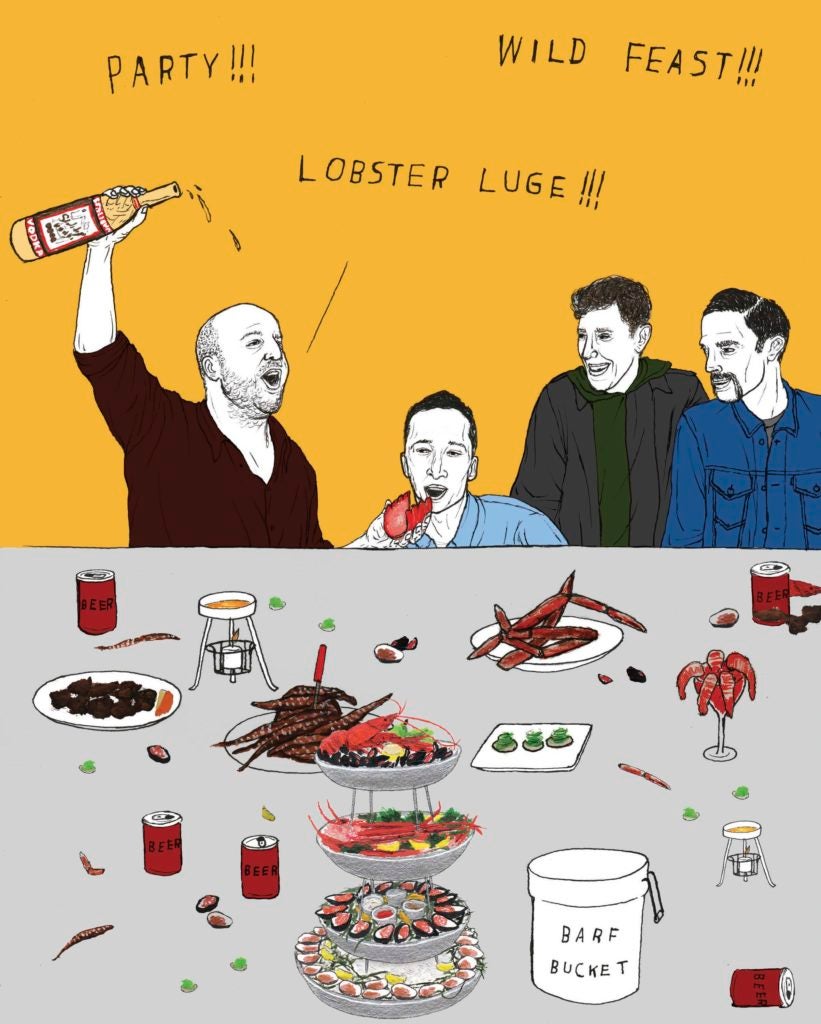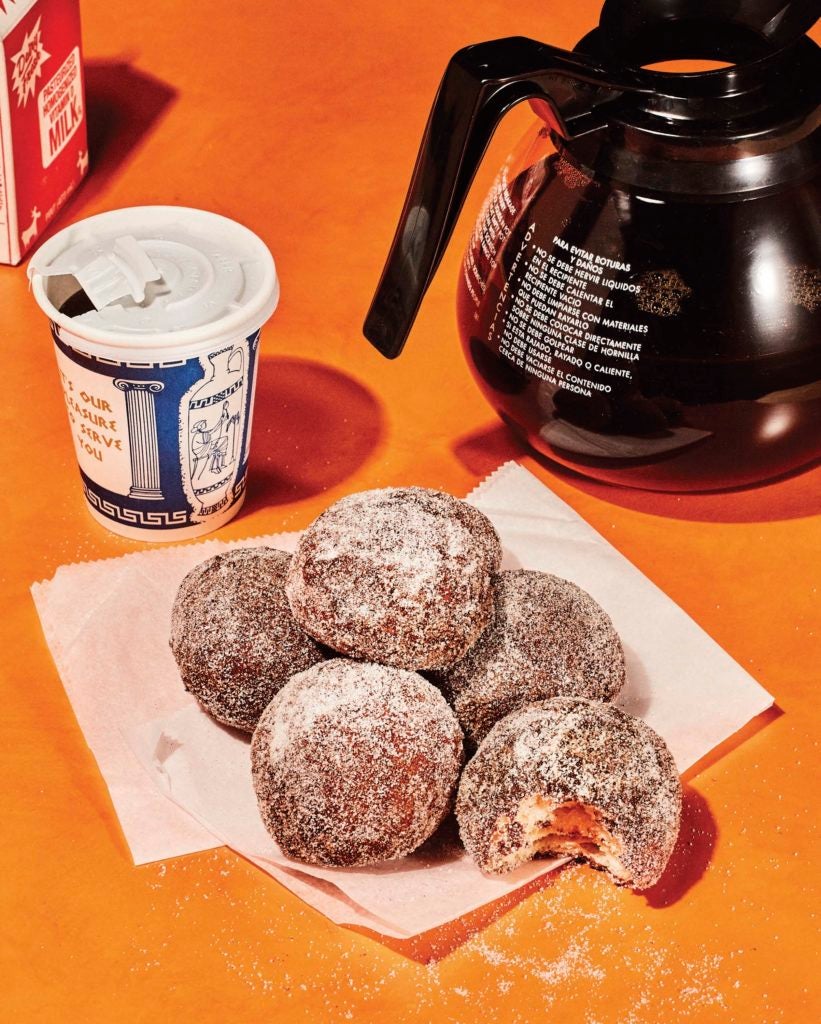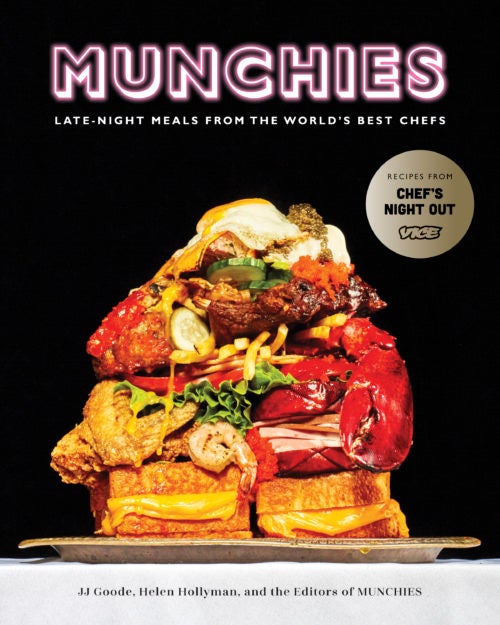
There are a few tips and tricks behind every great late-night meal.
For the average hangover, the morning after involves some version of a harrowing scene: a bed filled with potato chip crumbs; a forgotten TV blasting QVC; a half-eaten microwaved burrito lying lifeless on a crumpled paper towel. With a pounding headache, a human might stumble into the kitchen to grab a glass of water, only to realize: Yes, last night did happen.
No debaucherous night out is complete without a visit to the $1 slice shop, gas station, or corner store. The drunchies are sloppy, convenient, and best satisfied behind closed doors. Yet if you find yourself in the middle of a raucous evening in the company of chefs, the late-night meal you’re going to experience is a very different one altogether.
Unlike other blotto-after-dark humans, chefs balance their late-night intoxication cravings with a bit of technique, creativity, and care. And what they’re cooking after 2 a.m. says a whole lot more about who they are than the food they’re creating at their restaurants.

In our brand new cookbook, MUNCHIES: Late-Night Meals From the World’s Best Chefs, we’ve compiled a refined list of personality-packed, indulgent recipes from your favorite cooks. We’ve divided it into chapters that will guide you on the most delicious night of your life, beginning with temptation and ending in a post-gluttony revival. With recipes like Brandon Jew’s fried fish sandwich, Christina Tosi’s seven-layer dip, Jeremiah Stone and Fabian von Hauske’s Chinese drunken noodles, and Andrew Zimmern’s one-pot sticky chicken wings, you will not go to bed hungry. Here’s a basic playbook for mastering an even greater after-hours meal:
Cheese Is Your Best Friend
Torch it, melt it, deep-fry it. There are no bad decisions here, except to omit it from your late-night repertoire. Lather generous hunks of Camembert in a panko batter and deep-fry it like Australian chef Andrew McConell, who prefers to eat it with a drizzle of maple syrup. Put the extra effort into purchasing the good stuff from a cheesemonger, and don’t be afraid to ask them for some guidance. For Dominique Crenn, opting for the fattier cheeses that liquefy when heated—Raclette, triple crème, or quality Gruyère will do—are the make-or-break difference between good and great. Don’t be afraid to mix and match these luxurious options for the ooziest, most perfect grilled cheese you’ll ever taste, and that’s not the tequila talking.
Sandwiches Should Be Filled With Personality
This world is unfortunately packed with too many sandwiches that market themselves like a bad date: attractive as hell with zero personality. Don’t settle for mediocrity. Funnel innovation between two slices of starch like New Orleans chef Isaac Toups of Toups Meatery, whose midnight cravings reflect his Cajun roots: breaded pork chop sandwiches smeared with espresso aioli and squash pickles. You’re worth it.

Tortillas Are Magicians
Do not underestimate the bag of cold—possibly expired—tortillas in your fridge. With a little help from the stove, warming them up with queso de Oaxaca cheese, jalapeno, and a few sprigs of cilantro like Enrique Olvera makes for a transformative quesadilla experience. Prep some quality fillings (sober) before you go out—pulled pork, carne asada, or lamb for inspiration—and return to your very own late-night taco/burrito bar. Just remember to turn off the stove when you’re done.
Stock Your Pantry With Noodles and Rice Like It’s Y2K
Regardless of whether or not the impending apocalypse is actually coming, stocking up on dry goods is a smart thing to do. Pasta and rice create harmony between your drunk self and your kitchen. It is here that you can stand over the sink, consuming a sublime bowl of 4 a.m. spaghetti carbonara. And if you ask chef Michael White, it should include cream. Because YOLO.
Steak, It’s What’s For Late-Night Dinner
Time to give your corner store guy a rest and surrender to your carnivorous desires. Sure, it takes a touch of planning, but it’s totally worth the payoff. Channel Bourdain and make a medium-rare, perfectly seared côte de bœuf and wash it down with an expensive bottle of Burgundy. Alcohol can act as a truth serum and transform you into a chef who uses ingredients with gusto. In this moment, you become Braveheart and are bold enough to kill live crustaceans. Sauce them up with a beer- and butter-basted black bean sauce like Phet Schwader of Khe Yo, or lather them in chili oil and butter like Grant van Gameren of Bar Isabel. Save the shells and you’ve got a built-in lobster luge for the leftover booze you’re going to drain.
A Hard-core Nacho Game
You’ve hit that point in the evening when the number of drinks you’ve consumed are making you feel invincible. Your sozzled self isn’t afraid to admit that you love Kenny G and Thomas Kinkaid paintings! This is the same conscience guiding you to go hard-core in your current state and consume the most sinful of snacks, because you want everyone to know that you love them and the night is young. For Canadian restaurateur Jen Agg of the Black Hoof in Toronto, upping the nacho game involves beef tongue chili rather than the regular stuff. The fatty richness of the tongue boosts the beef flavor with a result that will make your shovel-into-your-mouth snack a nose-to-tail experience.
The Morning After
This kind of late-night eating is intended to help calm the inebriated beast that hijacked your body a few hours ago and an attempt at warding off tomorrow’s inevitable hangover. For chef Jamie Bissonnette of Toro, a seemingly simple scrambled eggs and potato chips (served inside the potato chip bag for ease) tastes like tortilla española and acts as a trustworthy hangover cure. Wash it down with Alka-Seltzer or La Croix and sleep it off. There’s more Fernet to be consumed next weekend.
Illustrations by Justin Hager

